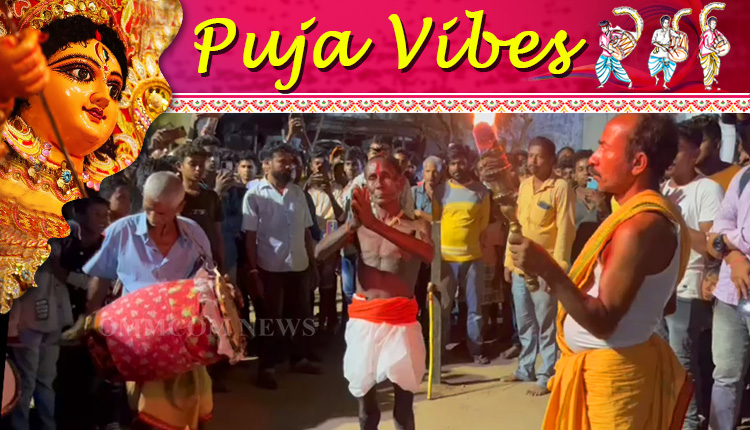Balasore: While ‘narabali’ (human sacrifice) and animal sacrifice during Dussehra at the Devi pithas in Odisha have been prohibited by an order of the Orissa High Court in 2009, different pithas have adopted different types of sacrifices at their shrines.
The trust of the Bhagwati Temple has been practicing a ‘symbolic human sacrifice’; the erstwhile royal family at Nilagiri in the Balasore district of Odisha has been pursuing the tradition of ‘Bali Nayak Khela’ since then. Instead of animals, the Nilagiri rajbati (royal palace) sacrifices a pumpkin to the Goddess on the occasion of Dussehra. The Kalisi (God man) touches a pumpkin during the ‘khela’ and it is offered to Maa Durga.
Here, Goddess Durga is worshipped as Maa Kanakdurga. Maa Kankadurga is being worshiped at the Nilgiri Rajbaati and the sacrificial game was started during the period of Rajarajuda to establish a close relationship between the king and his subjects. Mother Kanakdurga has been worshiped since 1780 in a secret chamber near the palace. According to Rajpanjika, human sacrifice was performed in Manka on the eve of Durgastami.
Durga Puja is a five-day ritual. However, the ‘Bali Nayak Khela’ at the Nilagiri Jagannath Temple begins four days before the Sasthi puja – the day when the Kalisi touches a person from a gathering who then sacrifices a pumpkin during the Astami puja.
Earlier, the ritual, initiated by the erstwhile Nilagiri royal family, was observed for 16 days during the Sodasa Puja of Goddess Durga. Later, the ritual was reduced to 10 days and now it is observed for just five days.
Despite the prohibition on animal sacrifice and reduction in the number of days of the ritual, the fervour and grandeur of the age-old tradition remain the same. So is the attraction of the Kanakdurga puja during the Dussehra.














